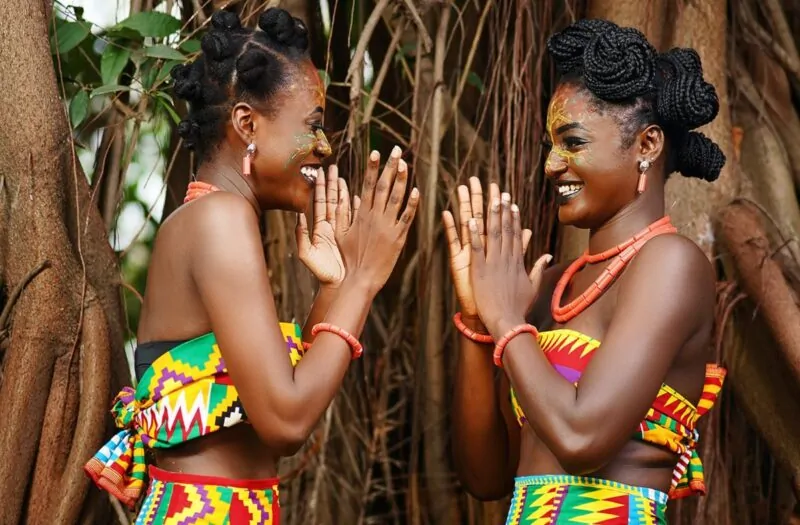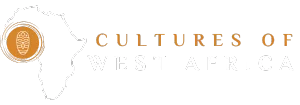
Ghana is home to a wide variety of indigenous languages, though this richness is often unseen by outsiders. The country is ethnically diverse, with over 100 different groups who communicate in unique ways across regions.
If you are wondering how many languages there are in Ghana, there are over 80. While English serves as the official language, traveling within Ghana revealed a more colorful linguistic landscape used in daily life. Whether in cities, villages, or rural areas, one can hear different languages bringing shared meaning to communities.
Regional differences in terrain and livelihoods have encouraged languages to adapt to local environments over generations. Yet despite variations, Ghana’s tongues also connect people through shared traditions.
1. Akan (Twi and Fante)
Spoken by millions across Ghana, the Akan language includes the widely used Twi and Fante dialects. Central and southern regions see the highest prevalence, particularly among the Ashanti, Fante, and Akuapem ethnic groups. This language is integral to everyday conversations, educational institutions, and media. In urban settings, Twi dominates, while Fante is more common along the coast.
The Ashanti Kingdom, known for its historical significance, has Twi as its main language. It is also one of the main languages in Ghana. Their rich traditions, such as the Adae festival and the creation of intricate kente cloth, are culturally significant. Fante speakers along the coast have a vibrant fishing culture and a history deeply rooted in trade.
2. Ewe
Found predominantly in the Volta Region, Ewe also extends into Togo and Benin. The Ewe people have a vibrant cultural heritage, with music, dance, and festivals playing a crucial role. Schools in the region teach Ewe to ensure the language remains vibrant for future generations.
Traditional Ewe music and dance, such as Agbadza, are performed during significant cultural festivals and ceremonies. These performances are not just for entertainment but also serve to preserve and transmit cultural values and history. Storytelling in Ewe, often enriched with proverbs, is another vital aspect of cultural life.
3. Ga
In the Greater Accra Region, including the capital city of Accra, the Ga language is widely spoken. The Ga people celebrate the Homowo festival, which is a significant cultural event marking the harvest and features rituals, music, and dance performed in Ga.
Ga is used in daily communication in Accra, playing a significant role in local governance and education. The language’s importance is evident during Homowo, where traditional songs, dances, and foods are prepared, symbolizing the community’s resilience and gratitude for the harvest.
4. Dagbani
The Dagomba people in the Northern Region speak Dagbani. This language is essential for cultural ceremonies and oral traditions, closely related to Mampruli and Nanun. It is also used in local schools, helping to maintain its significance.
Dagbani is deeply embedded in the cultural fabric of the Dagomba people. Traditional ceremonies, storytelling, and oral literature in Dagbani preserve the community’s history and customs. The language is also a medium for imparting wisdom and moral values through folktales and proverbs.
5. Dangme
Dangme is spoken around the Volta River in the Eastern Region. This language, closely related to Ga, shares many cultural traditions with its speakers. Festivals and everyday interactions are conducted in Dangme, and it is taught in local schools to preserve the language.
The Dangme people celebrate various cultural festivals that feature traditional music, dance, and rituals performed in their language. These events reinforce community bonds and cultural identity. The language’s preservation through education ensures that future generations can continue to practice their cultural traditions.
6. Gonja
In the Northern Region, the Gonja language is spoken by one of Ghana’s oldest traditional states. Gonja is used in ceremonies, governance, and social interactions, reflecting its historical significance.
The Gonja people have a rich cultural heritage that includes traditional music, dance, and oral literature. Festivals and ceremonies conducted in Gonja play a crucial role in preserving the community’s traditions and history. The language also facilitates communication within the Gonja kingdom, maintaining its cultural and administrative functions.
7. Nzema
Near the border with Ivory Coast, the Nzema language is spoken in the Western Region. Known for its extensive oral traditions, Nzema culture includes folklore, proverbs, and songs.
Nzema festivals and rituals, conducted in the native language, are vibrant cultural expressions that showcase the community’s heritage. The language is taught in schools to ensure its preservation, and oral traditions are passed down through generations to keep the culture alive.
8. Kasem
The Kasena people in the Upper East Region speak Kasem. Related to the Gurunsi languages of Burkina Faso, Kasem is central to music, dance, and storytelling in the community.
Kasem is used in everyday communication, local governance, and education. The language’s importance is highlighted during cultural festivals, where traditional music and dance are performed. By teaching Kasem in schools, the community ensures that its linguistic heritage is preserved for future generations.
9. Dagaare
Dagaare is spoken by the Dagaaba people in the Upper West Region and parts of Burkina Faso. This language is essential for traditional farming practices, cultural festivals, and oral literature.
The Dagaaba people maintain a strong connection to their land and cultural heritage through Dagaare. Festivals, storytelling, and music in Dagaare are vital cultural expressions. The language’s use in education and local governance helps preserve the community’s identity and traditions.
10. Frafra
In the Upper East Region, the Frafra language is closely related to other Gurunsi languages. Frafra culture includes music, dance, and storytelling, all of which are integral parts of the community’s identity.
Frafra is used in local governance, education, and daily communication. Cultural festivals and traditional ceremonies conducted in Frafra play a significant role in preserving the community’s heritage. Teaching the language in schools ensures that it continues to be spoken by future generations.
11. Sisaala
The Sisaala language is spoken in the Upper West Region and parts of Burkina Faso. The Sisaala people have rich traditions of festivals and customs performed in their native language.
Daily communication and education in Sisaala help preserve the language and its associated cultural practices. Traditional festivals, featuring music and dance, are conducted in Sisaala, reinforcing community bonds and cultural identity. The language’s continued use in education ensures its survival.
12. Kusaal
Kusaal is spoken by the Kusaasi people in the Upper East Region. Part of the Gur language family, Kusaal is essential for traditional agricultural practices and vibrant cultural festivals.
Teaching Kusaal in schools and using it in local governance helps maintain the language’s significance. Cultural expressions such as festivals, music, and dance in Kursaal are vital to the community’s heritage. The language’s preservation ensures that the Kusaasi people can continue to practice and pass down their traditions.
Last Words
Ghana’s linguistic diversity reveals a nation rich in cultures and traditions. Each language is more than just a means of communication; it is a cornerstone of the community’s identity and heritage. Understanding and appreciating these languages provides a deeper insight into Ghana’s history and cultural fabric.








